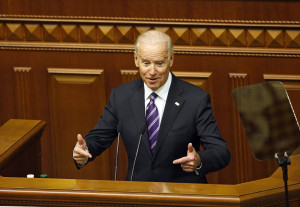 On May 5, 2016, the White House issued a report largely piggybacking on a recent U.S. Treasury Department study, on which we previously posted, with a primary focus on the purported misuse and negative impacts of non-compete agreements. The White House report reiterated much of what the Treasury Department covered its March 31, 2016 study, and focused on how the White House will apparently begin to “facilitate discussion on non-compete agreements and their consequences.”
On May 5, 2016, the White House issued a report largely piggybacking on a recent U.S. Treasury Department study, on which we previously posted, with a primary focus on the purported misuse and negative impacts of non-compete agreements. The White House report reiterated much of what the Treasury Department covered its March 31, 2016 study, and focused on how the White House will apparently begin to “facilitate discussion on non-compete agreements and their consequences.”
Indeed, on the same day that the White House issued its report, Vice President Joe Biden posted a lengthy message on his Facebook page, linking to a White House survey that encourages employees to share with the administration “how non-competes agreements or wage collusion are holding you down.” The Vice President expressed concern in his post about “the improper use of non-compete agreements, where companies make workers promise when they are hired that if they leave the company, they can’t work for another company in the same industry,” and noted that “these agreements can create unnecessary roadblocks for any worker trying to get a raise, looking to move up the ladder by joining another employer, or even start their own company.” He concluded by promising that “the President and I will continue to fight for the dignity and respect of hardworking Americans,” including “put[ting] forward a set of best practices and call to action for state legislators to make progress on reforms to address the misuse of non-competes.”
Like the U.S. Treasury Department, the authors of the White House report briefly acknowledge that, in some cases, non-compete agreements can play an important role in protecting businesses, promoting innovation, and encouraging greater employer investment in their workers. They ultimately conclude, however, that the potential harm of misuse by employers, and effects on wages, labor market dynamism, innovation, entrepreneurship, and regional economic growth outweighs those benefits. The authors further noted the “growing movement in states to take action to limit the misuse of non-compete agreements,” specifically highlighting that several states have taken steps to limit the scope and duration of non-compete agreements, noting for example Hawaii’s ban on non-compete agreements for technology jobs and New Mexico’s recent ban on non-compete agreements for health care jobs.
The authors go on to list seven areas in which they believe that workers may be disadvantaged by non-competes, and gives examples of how state legislatures are attempting to address the issues. The issues include (1) compelling workers who are unlikely to possess trade secrets to sign non-competes, (2) having new employees sign a non-compete only after accepting a job offer, (3) not explaining the implications and enforceability of such agreements to employees, (4) drafting overly broad or unenforceable agreements,(5) requiring non-competes without consideration beyond continued employment, (6) restricting employees after they are fired without cause, and (7) the purported detrimental health and well-being effects by restricting consumer choice.
The authors note that in the ensuing months, the White House, the Treasury Department, and Department of Labor will convene a group of experts in labor law, economics, government and business to facilitate discussion on this matter. “The goal will be to identify key areas where implementation and enforcement of non-competes may present issues, to examine promising practices in states, and put forward a set of best practices and call to action for state reform.” They also stress that research must continue to assess and identify policy reforms and how such reforms will impact the non-compete world. Lastly, the authors emphasize that ultimately the power of reform is in the hands of state legislators and policymakers to adopt institutional reforms that strike a balance between the appropriate use of non-competes and the protection of the workers subjected to them.